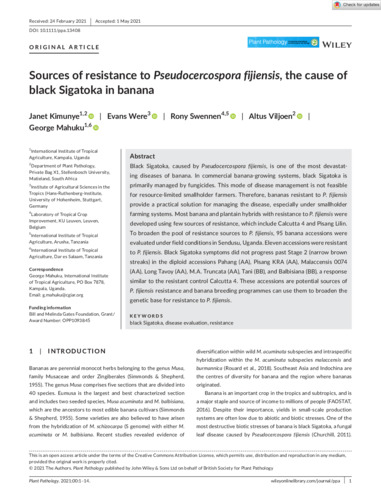Sources of resistance to Pseudocercospora fijiensis, the cause of black Sigatoka in banana
Abstract
Black Sigatoka, caused by Pseudocercospora fijiensis, is one of the most devastating diseases of banana. In commercial banana-growing systems, black Sigatoka is primarily managed by fungicides. This mode of disease management is not feasible for resource-limited smallholder farmers. Therefore, bananas resistant to P. fijiensis provide a practical solution for managing the disease, especially under smallholder farming systems. Most banana and plantain hybrids with resistance to P. fijiensis were developed using few sources of resistance, which include Calcutta 4 and Pisang Lilin. To broaden the pool of resistance sources to P. fijiensis, 95 banana accessions were evaluated under field conditions in Sendusu, Uganda. Eleven accessions were resistant to P. fijiensis. Black Sigatoka symptoms did not progress past Stage 2 (narrow brown streaks) in the diploid accessions Pahang (AA), Pisang KRA (AA), Malaccensis 0074 (AA), Long Tavoy (AA), M.A. Truncata (AA), Tani (BB), and Balbisiana (BB), a response similar to the resistant control Calcutta 4. These accessions are potential sources of P. fijiensis resistance and banana breeding programmes can use them to broaden the genetic base for resistance to P. fijiensis.

